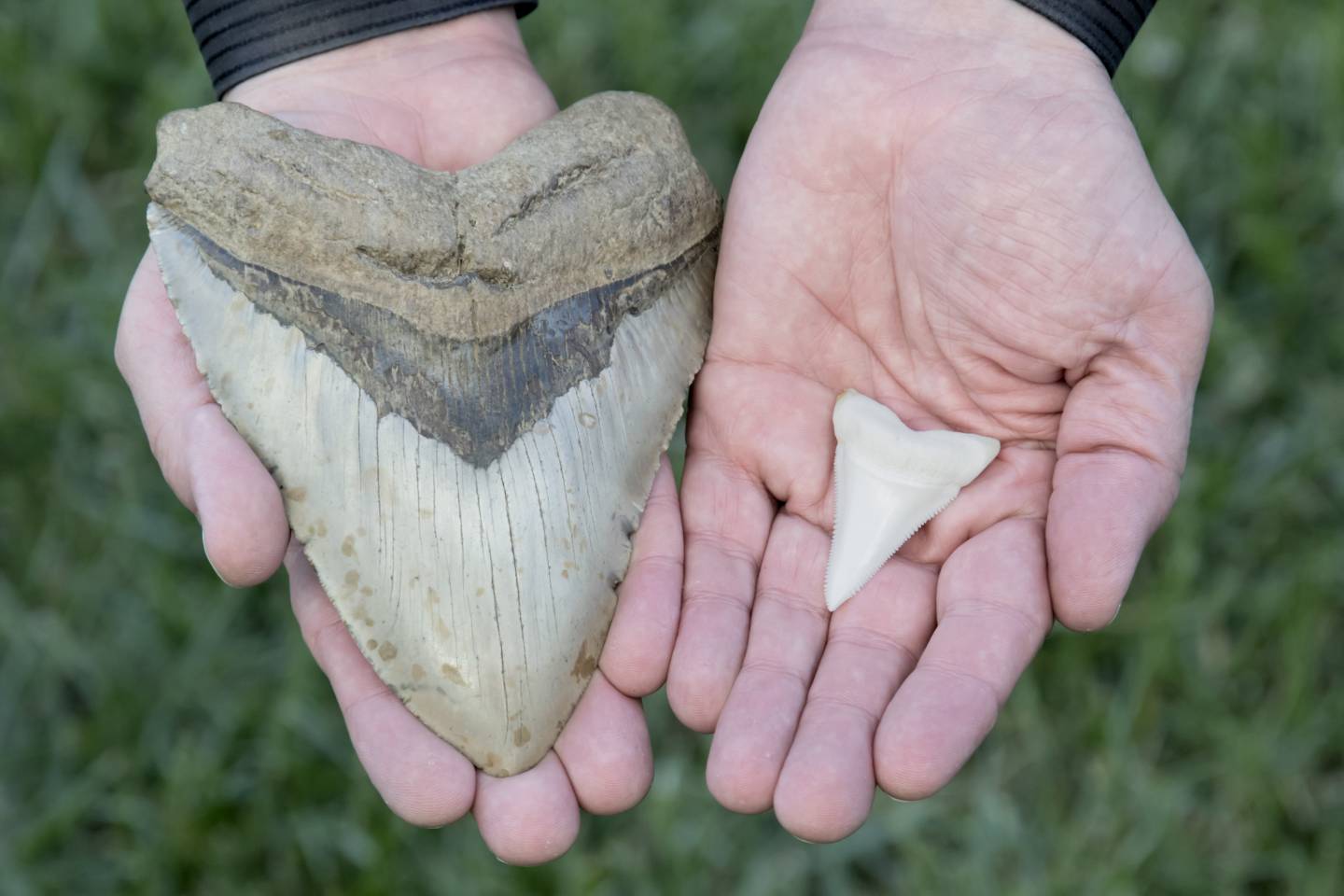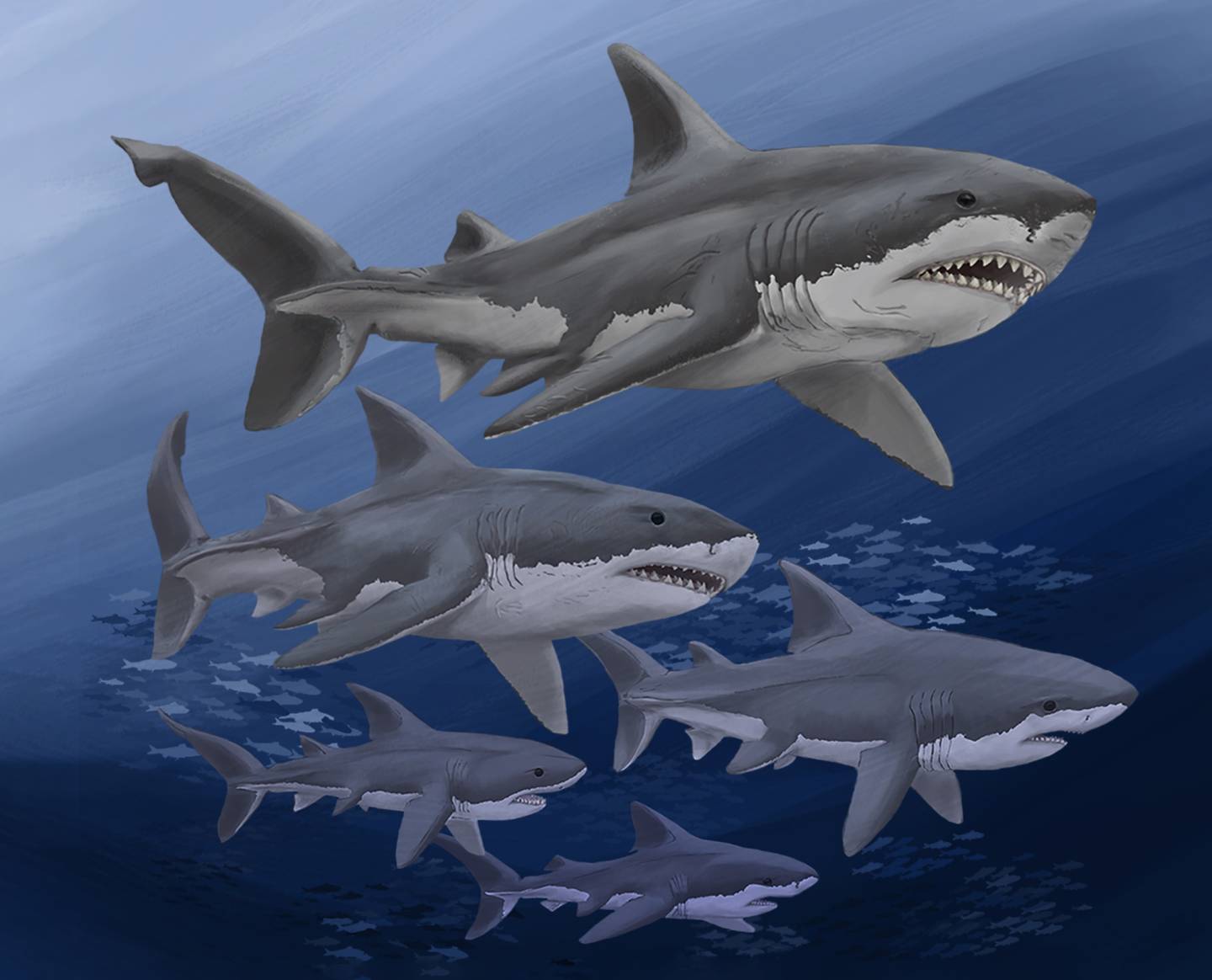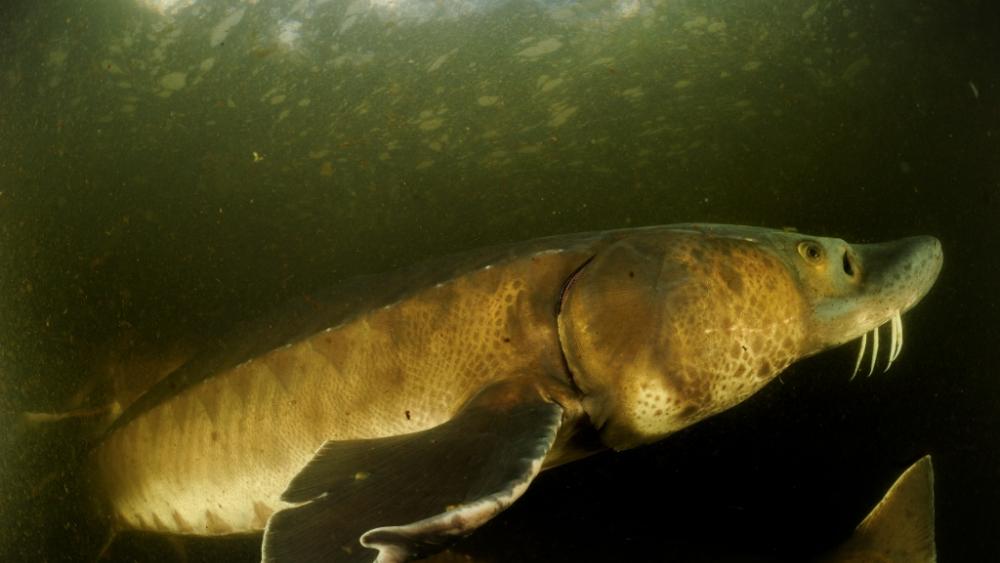New Princeton research shows that prehistoric megatooth sharks, the biggest sharks that ever lived, were apex predators at the highest level ever measured.
Megatooth sharks get their name from their massive teeth, which can each be bigger than a human hand. The group includes Megalodon, the largest shark that ever lived, as well as several related species.

Megalodons are known only from the teeth they left behind. A megalodon tooth (see photo) is compared to a great white shark tooth.
Each inch of tooth corresponds to about 10 feet of length: 20 feet for the 2-inch great white shark tooth and 60 feet for the 6-inch megalodon tooth. Encased in rock-hard enamel, teeth are more easily preserved than bones, let alone a shark’s cartilage skeleton.
Shark teeth are one of the most abundant fossil types because sharks have existed for more than 400 million years, and the predators are constantly growing and losing teeth, so every shark produces thousands of teeth over its lifetime.
While sharks of one kind or another have existed since long before the dinosaurs — for more than 400 million years — these megatooth sharks evolved after the dinosaurs went extinct and ruled the seas until just 3 million years ago.
“We’re used to thinking of the largest species — blue whales, whale sharks, even elephants and diplodocuses — as filter feeders or herbivores, not predators,” said Emma Kast, a 2019 Ph.D. graduate in geosciences who is the first author on a new study in the current issue of Science Advances. “But Megalodon and the other megatooth sharks were genuinely enormous carnivores that ate other predators, and Meg went extinct only a few million years ago.”
Her adviser Danny Sigman, Princeton’s Dusenbury Professor of Geological and Geophysical Sciences, added,
“If Megalodon existed in the modern ocean, it would thoroughly change humans’ interaction with the marine environment.”
A team of Princeton researchers has now discovered clear evidence that Megalodon and some of its ancestors were at the very highest rung of the prehistoric food chain – what scientists call the highest “trophic level.”
Indeed, their trophic signature is so high that they must have eaten other predators and predators-of-predators in a complicated food web, say the researchers.
Megalodon has been conservatively estimated at 15 meters long — 50 feet — while modern great white sharks typically top out around five meters (15 feet).





